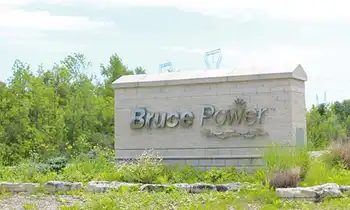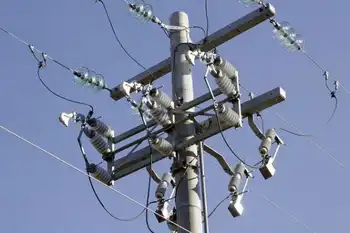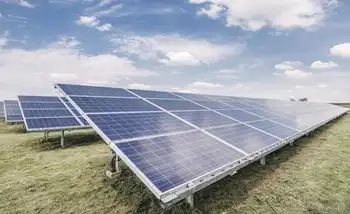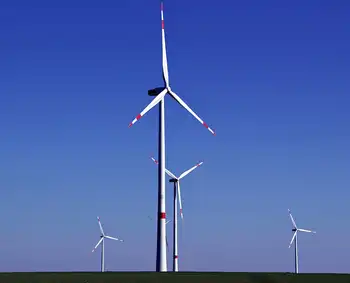First Electrolytic Hydrogen Station
TORONTO -- - Stuart Energy Systems Corporation unveiled and demonstrated the first intelligent electrolytic Hydrogen Energy Station (HES) in the world, at its headquarters in Mississauga, Ontario.
Stuart Energy's HES is positioned to revolutionize the way energy and fuel is created and used. It is the foundation of a new hydrogen infrastructure that uses only water and electricity to produce clean, pure hydrogen. With Stuart Energy's HES, low-cost electricity can now be stored as high-value energy in the form of hydrogen, then subsequently deployed, on- demand, for delivering emission-free fuel for vehicles, emergency back-up power for buildings, electrical grid optimization, off-grid rural electrification, and other critical applications that will ensure a future of clean and secure energy.
The HES consists of five product modules:
- a Stuart Energy hydrogen generator, which creates clean hydrogen using electricity and water
- a hydrogen compression system, which delivers high-pressure hydrogen
- a high-pressure hydrogen storage system with tanks supplied by Dynetek Industries
- a Ballard Power Systems hydrogen generator set powered by a Ford Motor Company Internal Combustion Engine, which provides ultra low emission electrical power
- a high-pressure hydrogen fuel dispensing system
Stuart Energy integrated these components to provide an HES that demonstrates Stuart Energy's intelligent fueling patent. The patent provides exclusive rights to develop, and market electrolysis-based stations where data is exchanged between the system and the user.
At the event, Stuart Energy simulated a power failure in part of the building. Within seconds the Stuart Energy HES restored power to emergency lights. Later the intelligent patented HES provided clean hydrogen fuel to a Ford Generation I hydrogen-powered internal combustion engine vehicle. Steve Gilchrist, Commissioner of Alternative Energy and M.P.P. of Scarborough East, filled up the Ford vehicle with hydrogen before taking the car out for a test drive.
"The Stuart Energy HES is a unique hydrogen infrastructure solution with a compelling value proposition," said Jon Slangerup, President and CEO of Stuart Energy. "It offers our customers the ability to generate power and fuel vehicles using a completely integrated system. The world is experiencing a rapid evolution in the way clean, secure energy is produced, used and distributed. Today's demonstration showed that fuel stations need not look like conventional stand-alone stations but can also be based out of commercial or industrial buildings."
The HES adds vehicle fueling capabilities to the Stuart Energy alpha Hydrogen Back-Up Power System (H2BPS) that was developed to fulfil a letter of intent with Cheung Kong Infrastructure of Hong Kong. The beta prototype of the H2BPS is expected to be installed in Hong Kong in mid 2003. The installation and testing of the beta will be the third milestone in a letter of intent that contemplates the joint marketing and distribution of these units in the Asia Pacific region. Stuart Energy continues to work with local officials in Hong Kong to obtain government approvals as well as develop global codes and standards prior to commercialisation of these units. "We are excited and proud to work with CKI on the development and deployment of hydrogen infrastructure products such as the HES, and are confident that these systems will be compelling solutions for global markets, especially Asia Pacific, North America and Europe," said Mr. Slangerup.
Mr. Barrie Cook, Director of Cheung Kong Infrastructure Holdings Limited, stated "We are pleased at the opportunity for commercial deployment of HES units, initially in Hong Kong. We continue to work with Stuart Energy and Hong Kong officials to make the hydrogen economy a reality."
Frequently, lack of a hydrogen fueling infrastructure is described as the obstacle to introducing hydrogen powered vehicles. The HES solves that problem. The unit installed at Stuart Energy is able to supply 6 hours of 120kW back-up power. The on-site fueling dispenser is capable of supplying hydrogen fuel to a small fleet of vehicles at pressures of 3,600 and 5,000 psi.
"Now with hybrids, ICEs fueled with hydrogen and fuel-cell vehicles on their way, traditional powertrains are being pushed now more than ever before to be near zero in emissions and to maximize fuel economy. At the same time the customer expects no compromises with performance. We feel the Ford powertrain lineup is ready for the challenge, and the best is yet to come," commented Mr. Jack Damron, President and CEO, Ford Power Products, Ford Motor Company.
Unlike hydrocarbon-based reformation systems, the HES uses water electrolysis to generate hydrogen with the only emission being oxygen. This is a unique feature of the HES, which enables a completely green energy cycle to be realized when renewable energy sources such as wind, hydro or solar are used to produce the hydrogen fuel.
"Stuart Energy remains committed to providing products that allow renewable sources of energy to be used in the generation of clean and secure hydrogen. At our facility, we are contracting wind power generated in Ontario, at Port Albert Wind Farms, to supply power to our HES," said Mr. Slangerup. "We are demonstrating the hydrogen economy under one roof; it's very powerful."
Related News

Bruce Power awards $914 million in manufacturing contracts
TORONTO - Today, Bruce Power signed $914 million in advanced manufacturing contracts for its Major Component Replacement, which gets underway in 2020 and will allow the site to provide low-cost, carbon-free electricity to Ontario through 2064.
The Major Component Replacement (MCR) Project agreements include:
- $642 million to BWXT Canada Inc. for the manufacturing of 32 steam generators to be produced at BWXT’s Cambridge facility.
- $144 million to Laker Energy Products for end fittings, liners and flow elements, which will be manufactured at its Oakville location.
- $62 million to Cameco Fuel Manufacturing, in Cobourg, for calandria tubes and annulus spacers…




